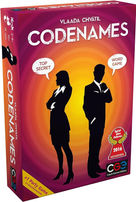Official Backgammon Rules and Strategy
This post contains affiliate links. For more information, see our disclosures here.
Backgammon is one of the oldest known board games, combining elements of luck and strategy. Here's a comprehensive guide to the rules and strategies of Backgammon:
Game Components:
Board: Divided into four quadrants, each with six narrow triangles called points.
Checkers: 15 checkers per player, usually in two different colors.
Dice: Two standard six-sided dice.
Doubling Cube: A die marked with the numbers 2, 4, 8, 16, 32, and 64 used for raising the stakes.
Dice Cups: Optional, used for shaking and rolling the dice.
Setup:
Initial Setup:
Each player places their 15 checkers on the board as follows:
2 checkers on their 24-point.
5 checkers on their 13-point.
3 checkers on their 8-point.
5 checkers on their 6-point.
The 24-point is the farthest point from each player and is referred to as the opponent's home board.
The board is set up symmetrically.

Objective:
The goal of Backgammon is to move all your checkers into your home board and then bear them off (remove them from the board) before your opponent does.
Gameplay Overview:
Backgammon is played in turns, with each turn consisting of a roll of two dice and the movement of checkers.
Starting the Game:
Each player rolls one die. The player with the higher number moves first using both dice rolled. If there is a tie, the players roll again.
The first player then rolls both dice to start their turn.
Movement of Checkers:
The numbers rolled on the dice indicate how many points the checkers can move.
A player moves one or two checkers according to the numbers rolled. For example, if a player rolls a 3 and a 5, they can move one checker 3 points and another checker 5 points, or one checker 8 points (if both moves are legal).
Checkers move forward in the direction from the opponent's home board to the player's home board.
Rules for Movement:
A checker may only move to an open point, which is one that is not occupied by two or more opposing checkers.
If a player rolls doubles (the same number on both dice), they play the numbers shown on the dice twice. For example, a roll of double 3s means the player can move four 3-point moves.
If a player cannot make a legal move with the numbers rolled, they lose their turn.
Hitting and Entering:
If a checker lands on a point occupied by a single opposing checker, the opposing checker is "hit" and placed on the bar.
A checker on the bar must re-enter the game before any other moves can be made. Re-entry is done by moving the checker to an open point in the opponent's home board corresponding to one of the numbers rolled on the dice.
Bearing Off:
Once a player has moved all their checkers into their home board, they can start bearing off.
To bear off, a player rolls the dice and removes a checker from the point corresponding to the number rolled. For example, a roll of 5 allows a checker to be borne off from the 5-point.
A player can also move a checker within the home board if they cannot bear off directly.
If a checker is hit during the bearing off process, it must re-enter and move back into the home board before bearing off can continue.
Winning the Game:
The first player to bear off all 15 of their checkers wins the game.
A gammon occurs if the opponent has not borne off any checkers, doubling the stakes.
A backgammon occurs if the opponent has not borne off any checkers and still has checkers in the winner's home board or on the bar, tripling the stakes.
Doubling Cube:
Players can propose to double the stakes at the start of their turn before rolling the dice.
The opponent can accept the double, taking control of the doubling cube, or concede the game.
Doubling can continue throughout the game, with the stakes increasing exponentially.
Strategy Tips:
Early Game: Focus on building a strong home board and advancing checkers safely.
Blocking: Create blockades (prime) to prevent your opponent's checkers from advancing.
Hitting: Hit opponent's checkers when it provides a strategic advantage but avoid unnecessary risks.
Bear Off Wisely: During the bearing off phase, try to bear off checkers evenly to minimize gaps that could force you to waste moves.
By mastering the rules and developing effective strategies, players can enhance their enjoyment and success in Backgammon.















